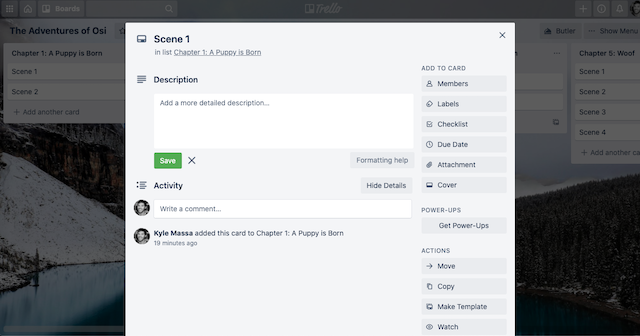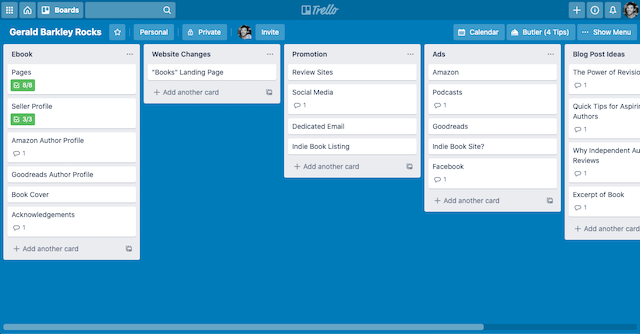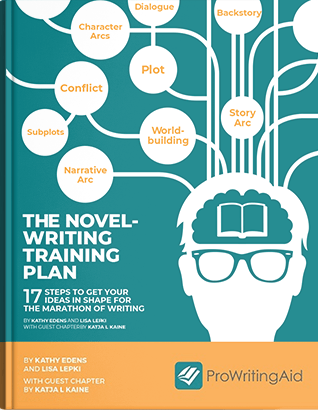
Outlines are to novelists as maps are to adventurers. If we're going on an epic quest, it helps to chart a course first!
But the outlining process can sometimes feel dry. Heading, subheading, bullet points, another subheading, more bullet points… it’s not especially fun – unless you really dig bullet points.
This article is for those writers who don't. Let's examine three unique ways to outline a novel and map out your journey.
1. Index Cards
Not only are index cards a classic school supply – they’re also an excellent aid for novelists. Their chief allure: interchangeability. They allow us to map out our novel one card at a time, then sequence them in the order that makes the most sense.
Start by writing on an index card. You need not begin with the first scene, though you can if you'd like. One card might represent one chapter, or each might cover a single scene – it's up to you. I recommend starting with the scenes you're most excited about. Jot down some sentences about that climactic final confrontation, that unexpected twist, or that thrilling opening chase scene. Don't worry about the sequence yet. Just write in any order.
Be as detailed or sparse as you like. When I first tried this exercise, I was very much the former; I’d fill the entire card, front to back. It's a viable strategy, but I discovered it was too much detail for my outlining process. I now opt for a more streamlined approach. I limit myself to just one sentence of principal action per index card. I find this prevents me from lingering on the outlining phase for too long. Plus, I rarely know my story well enough yet at this point, anyway.

Once those principle cards are set, it’s time to connect them. What scenes go in between these most exciting ones to make this story gel? For example, we might decide that our main character – let’s call her Osi, since that’s my dog’s name and I’m sitting next to her right now – starts out as a tiny puppy and grows into a canine superhero. We probably have one card for her beginning, one for her endpoint, then a handful in between.
That’s not yet a complete character arc. We need some scenes of training in between cards A and B, plus scenes where she meets allies and supporting characters – and that’s just for starters. Fill in the scenes between your most exciting scenes until you have a coherent story.
Another impressive aspect of the index card method is that you can shuffle your cards around. If you examine your story and find a piece doesn’t fit, move it to a better spot. Or, if you’re writing a book where scenes are interchangeable, the index card method will help give you an overview. Try it out and see what you think!
2. Trello
Trello is an organizational tool many companies use to stay on task. It’s essentially a digital post-it note board. Projects can be separated into columns and notes, and each note contains details, attachments, due dates, checklists, and more.
Trello is a great tool for companies to collaborate and stay on track. In fact, we use it here at ProWritingAid to work on our articles! But companies aren’t the only ones who can benefit from this app. Writers love it, too.
Check out the screenshot below.

Here I’ve created a basic outline for our book about Osi. It’s similar to our index card method, only it’s digital. You can shift these cards around if you’d like, or you can click on them to expand.

Google Docs works especially well with Trello since you can add links to documents in every card. This can be especially helpful if you hire an editor because they can join your Trello board. From there, you’ll be able to see what parts of your book they’ve edited. They can even leave notes and messages right on the card.
Trello is also an excellent aid for planning the promotion of your novel.

This is my promo plan for my first book. I've got checklists, links, notes, and more in each card. It's a great way to stay on target, even after the writing is done.
And the best part? All these features are free!
3. The Junk Doc
This is one of my favorite ways to plan a novel. A Junk Doc has no rules – just write any and all ideas you have about your novel.
Unlike our previous two approaches, the Junk Doc has no formal structure. You might start with your characters or the basic plot, but the more you write, the more you’ll discover. Explore setting, plot points, or even those vague intricacies you’ve been brainstorming but haven’t yet formalized. Don’t worry about form or style – this document is just for you. Its purpose is to get your ideas out of your head and onto the page.
Keep writing until you can’t think of anything else you want to say about your novel. I once had a Junk Doc that was 60 pages long, so that might give you an idea of just how lengthy they can get. You should now have a firm sense of your characters, setting, plot, and more.
Where to go from here is up to you. You might jump right into the writing process, or you might try formalizing some concepts introduced in your Junk Doc. Do whatever feels right to you. Either way, I hope it proves to be a fun and freeing experience.
In Conclusion
There’s no one correct way to outline a novel: it’s different for every writer. Hope these ideas get you off to a good start!
Looking for software that can help you outline?
We're big fans of using software to improve and streamline the writing process. We've done in-depth reviews of different software so you can decide what works for you. Check them out now:
- Writing App Reviews: The Novel Factory
- Writing App Reviews: The Outlining Your Novel Workbook
- How to Outline Your Novel With Scrivener's Outliner and Corkboard
- How to Outline Your Novel with Plottr


